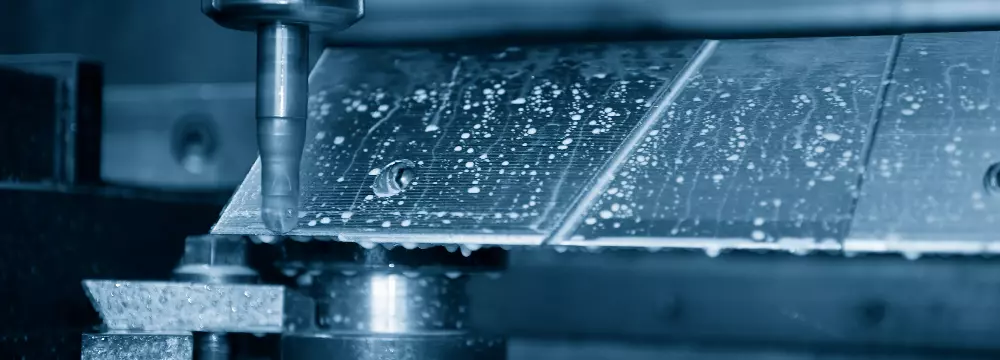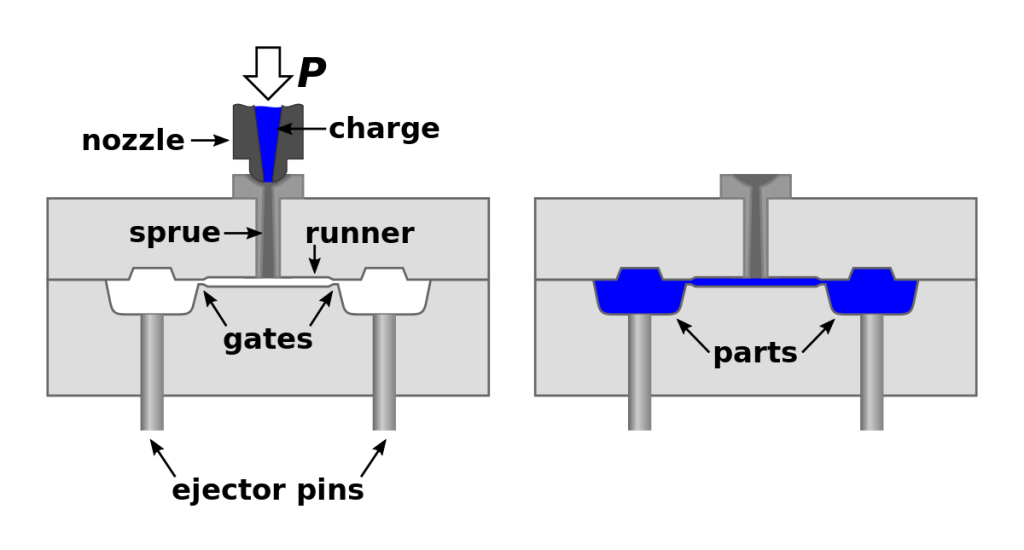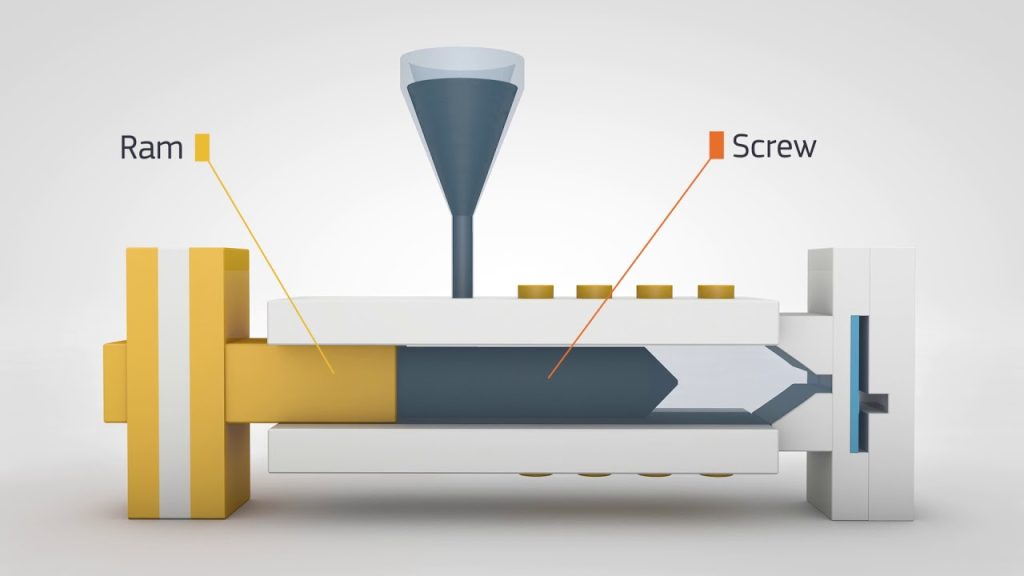Table of Contents
Injection molding is a widely used manufacturing process for producing plastic parts. However, one of the most common questions asked by clients is how long it takes to complete injection molding. The answer to this question is not straightforward, as there are several factors that affect the time it takes to complete the process.
Firstly, the complexity of the part being produced is a significant determinant of the time it takes to complete injection molding. Secondly, the size of the production run, the type of material used, and the design of the mold all play a role in determining the time it takes to complete the process. In this article, we will delve into these factors and provide a comprehensive answer to how long injection molding takes.
Injection molding time varies depending on the size and complexity of the part being produced. Small, simple parts can take as little as a few seconds to mold, while larger, more complex parts can take several minutes. The molding process includes preparing the mold, injecting the material, and cooling the part. Once the part has cooled and solidified, it can be removed from the mold. Overall, injection molding is a highly efficient and fast process for producing high-quality parts in large quantities.
How Long Does Injection Molding Take?
Injection molding is a widely used manufacturing process that involves injecting molten material into a mold to create a desired shape. The process is used to create a wide range of products, including automotive parts, medical devices, toys, and household items. One of the most common questions people ask about injection molding is, “How long does the process take?” In this article, we will explore the various factors that affect injection molding time and provide some general guidelines on how long the process typically takes.
Factors That Affect Injection Molding Time
The time it takes to complete an injection molding cycle depends on several factors. Some of the key factors that affect injection molding time include:
- The size and complexity of the part
- The type of material used
- The temperature and pressure of the injection molding machine
- The design of the mold
- The number of cavities in the mold
- The cooling time required for the part to solidify
The size and complexity of the part are perhaps the most significant factors that affect injection molding time. Larger and more complex parts require more material to be injected, which means longer filling times. Additionally, more complex parts may require longer cooling times to ensure the part solidifies properly.
The type of material used also affects injection molding time. Different materials have different flow rates, which can impact filling time. Similarly, some materials require higher injection pressures, which can extend the cycle time.
General Guidelines for Injection Molding Time
While the time it takes to complete an injection molding cycle can vary significantly based on the factors listed above, there are some general guidelines that can be used to estimate cycle time. For example:
- Small, simple parts may take as little as a few seconds to complete a cycle.
- Larger or more complex parts may take several minutes to complete a cycle.
- High-precision parts may require longer cooling times to ensure the part solidifies properly.
- Materials with high viscosity or high-melt temperatures may require longer filling times.
It is worth noting that these are just general guidelines, and cycle times can vary significantly based on the specific part being molded and the conditions of the injection molding process.
The Benefits of Injection Molding
While injection molding time can vary depending on the factors described above, the process has several benefits that make it an attractive option for manufacturers. Some of the key benefits of injection molding include:
- The ability to create complex parts with precise tolerances
- The ability to use a wide range of materials, including plastics, metals, and ceramics
- High production rates, which can help manufacturers produce large quantities of parts quickly and efficiently
- Low labor costs, as the process is highly automated
- The ability to create parts with consistent quality and repeatability
These benefits make injection molding an ideal process for many manufacturing applications, including the production of medical devices, automotive parts, and consumer goods.
Injection Molding vs. Other Manufacturing Processes
While injection molding has several advantages over other manufacturing processes, such as casting and machining, it is not always the best option. Some of the key differences between injection molding and other manufacturing processes include:
| Injection Molding | Casting | Machining | |
|---|---|---|---|
| Complexity | Can create highly complex parts with precise tolerances | Can create complex parts, but tolerances may not be as precise | Can create simple to moderately complex parts with high precision |
| Material Choice | Can use a wide range of materials, including plastics, metals, and ceramics | Limited to materials that can be melted and poured into a mold | Limited to materials that can be cut or shaped with a tool |
| Production Rates | High production rates possible | Lower production rates than injection molding | Lower production rates than injection molding |
| Labor Costs | Low labor costs due to highly automated process | Higher labor costs due to manual handling of molten material | Higher labor costs due to manual machining of parts |
As shown in the table above, injection molding is ideal for creating highly complex parts with precise tolerances, using a wide range of materials, and producing parts quickly and efficiently. However, for simpler parts or for materials that cannot be melted and poured, other manufacturing processes may be more suitable.
Conclusion
Injection molding is a highly versatile and widely used manufacturing process that can create a wide range of parts quickly and efficiently. The time it takes to complete an injection molding cycle can vary significantly based on several factors, including the size and complexity of the part, the type of material used, and the design of the mold. While there are some general guidelines that can be used to estimate cycle time, it is important to remember that the specific conditions of each molding process can have a significant impact on cycle time. Despite this, the benefits of injection molding, including the ability to create complex parts with precise tolerances and the ability to use a wide range of materials, make it an attractive option for many manufacturers.
Frequently Asked Questions
Injection molding is a popular manufacturing process used for creating plastic parts. One of the most common questions asked about this process is how long it takes. Below are five questions and answers about injection molding time.
How long does injection molding take?
The time it takes for injection molding depends on several factors. The size and complexity of the part being made, the type of material being used, and the number of parts being produced all play a role. On average, the process can take anywhere from a few seconds to a few minutes.
The injection molding process is broken down into several stages. First, the material is melted and injected into a mold. Next, the mold is cooled and the part is ejected. The time it takes for each stage can vary depending on the factors mentioned above.
What factors affect the injection molding time?
As mentioned, several factors affect the injection molding time. The size and complexity of the part being made can increase the time it takes to produce. The type of material being used can also impact the process, as some materials require higher temperatures to melt and form.
The number of parts being produced can also affect the time it takes. If only a few parts are being produced, the process may be quicker than if a large quantity is being made. Additionally, the type of injection molding machine being used can affect the time it takes to produce the parts.
Can the injection molding time be reduced?
Yes, there are ways to reduce the injection molding time. One way is to use a material that melts at a lower temperature, as this can speed up the process. Additionally, using a machine with a higher injection speed can also reduce the time it takes to produce parts.
Another way to reduce injection molding time is to optimize the mold design. By creating a mold that is more efficient and streamlined, the process can be expedited. Finally, by using a larger injection molding machine, more parts can be produced at once, reducing the overall time it takes to complete the process.
What is the typical lead time for injection molding?
The lead time for injection molding can vary depending on the complexity of the part being made and the quantity of parts being produced. On average, the lead time can range from a few weeks to a few months.
To ensure a faster lead time, it is important to work with an experienced injection molding manufacturer. They can help optimize the design of the mold and choose the most efficient materials and machines for the job. By working with a reliable manufacturer, the lead time can be significantly reduced.
How can I get an accurate estimate of injection molding time for my project?
To get an accurate estimate of injection molding time for your project, it is important to provide as much information as possible to the manufacturer. This includes the size and complexity of the part, the type of material being used, and the quantity of parts being produced.
Additionally, it is helpful to work with a manufacturer that has experience in the type of part you are producing. They can provide insight into the most efficient methods for producing the part and can offer suggestions for optimizing the mold design. By working closely with a manufacturer and providing detailed information, you can get a more accurate estimate of injection molding time for your project.
In conclusion, injection molding is a critical process in the manufacturing industry that involves creating complex molds and using molten materials to produce a wide range of products. The length of time it takes to complete an injection molding project varies depending on several factors.
One of the primary factors that affects the duration of injection molding is the size and complexity of the mold. Larger and more intricate molds require more time to create and produce the desired product. Another factor is the type of material being used, as some materials can take longer to melt and cool than others.
Finally, the experience and expertise of the team working on the project can also impact the length of time it takes to complete injection molding. Skilled professionals with extensive knowledge of the process can often complete projects more quickly and efficiently, ensuring that products are produced with the highest quality standards.
Overall, while injection molding times can vary, it is essential to work with experienced professionals who can help ensure that your project is completed on time and to the highest possible standards. By understanding the various factors that impact injection molding times, you can make informed decisions about your manufacturing needs and ensure that you are getting the best possible results.
Request a quote today!
[contact-form-7 id="1578" title="Contact form"]
Please compress the file into a ZIP or RAR file before uploading. Alternatively, send through your RFQ by email.
enquires@unitymanufacture.com





